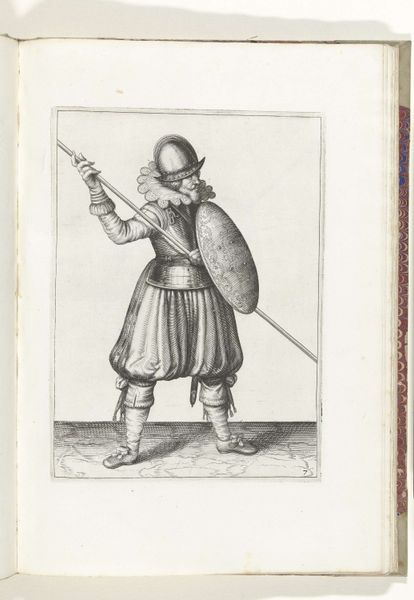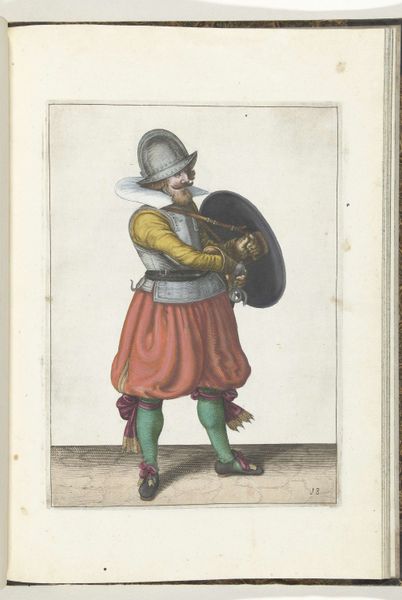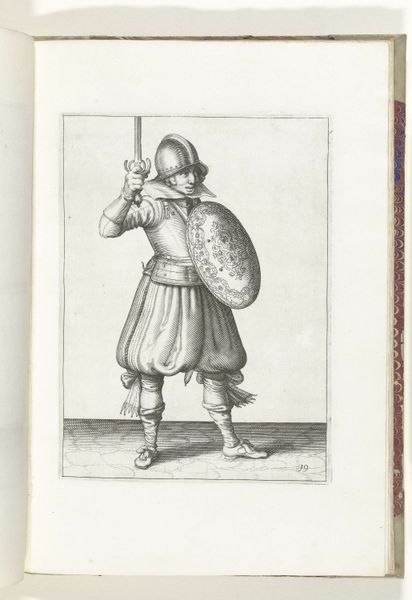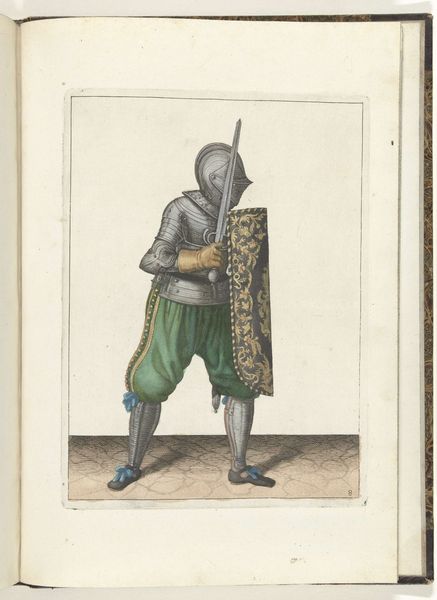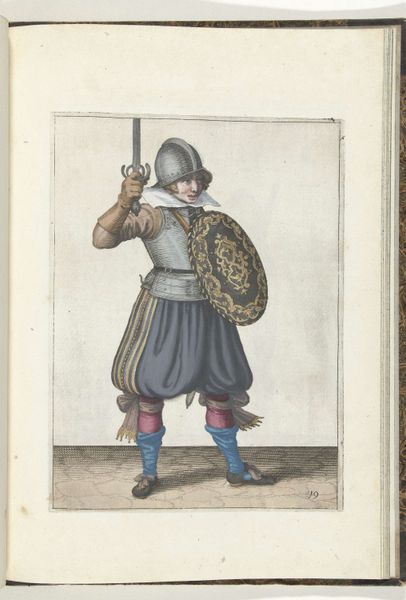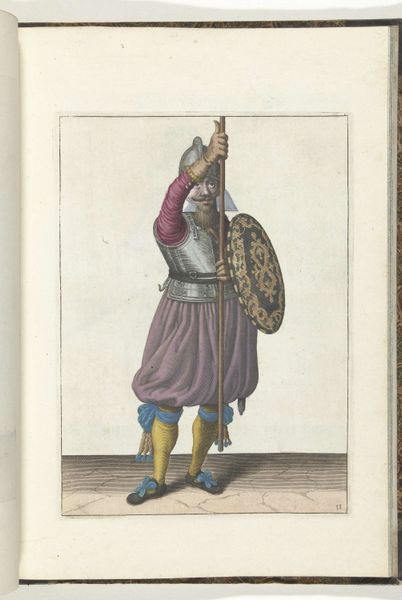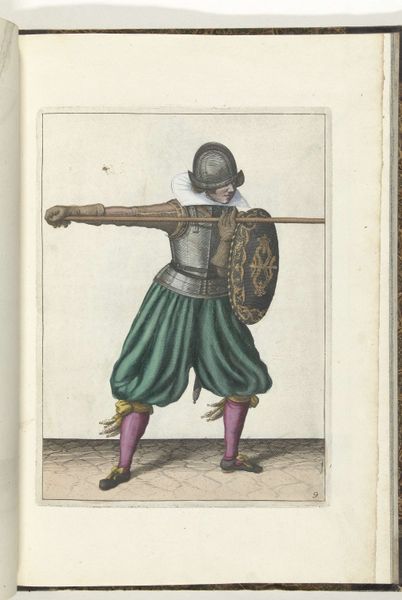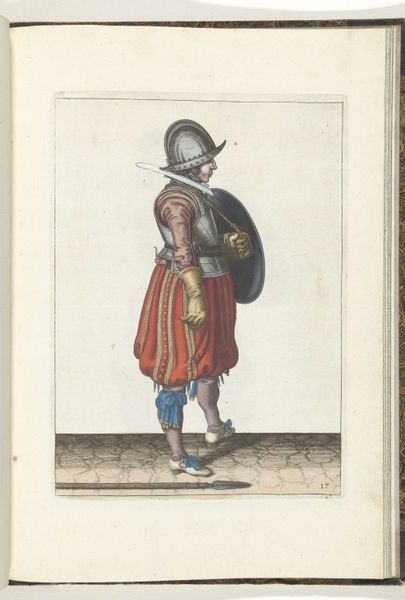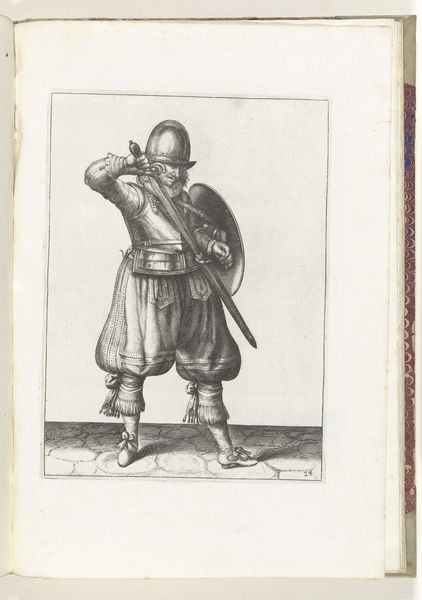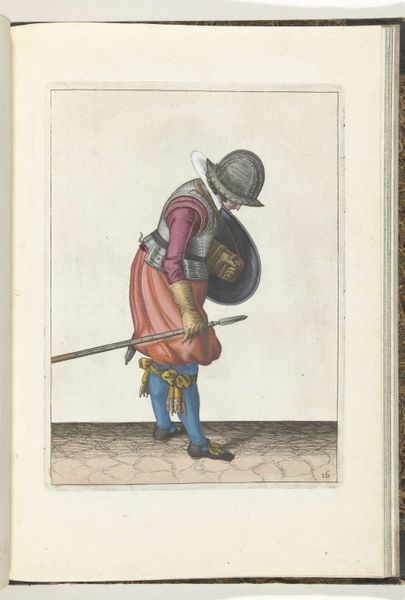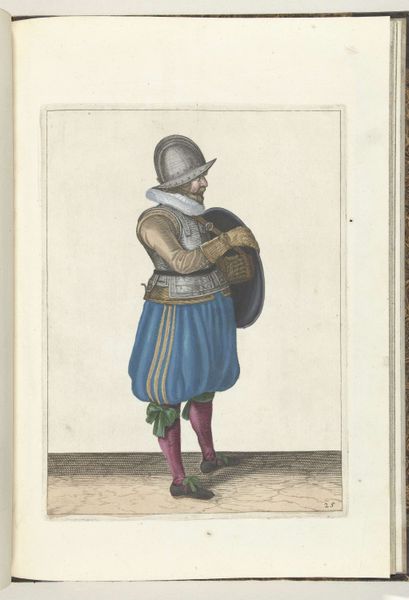
De exercitie met schild en spies: de soldaat brengt in drie tijden de spies weer terug in de rustpositie, eerste beweging (nr. 10), 1618 1616 - 1618
0:00
0:00
drawing, coloured-pencil, paper, ink
#
portrait
#
drawing
#
coloured-pencil
#
dutch-golden-age
#
paper
#
ink
#
coloured pencil
#
genre-painting
Dimensions: height 260 mm, width 190 mm
Copyright: Rijks Museum: Open Domain
Curator: Welcome! Before us we have "De exercitie met schild en spies: de soldaat brengt in drie tijden de spies weer terug in de rustpositie, eerste beweging (nr. 10)", created between 1616 and 1618 by Adam van Breen. Editor: It’s interesting. A touch static, even instructional. Is it the posture, so rigidly upright, or perhaps the somewhat muted tones, that makes me think of a manual or some sort of... diagram? Curator: Indeed! The work depicts a soldier during an exercise with shield and spear, illustrating the motions in stages. Consider its role within Dutch society; military prowess was a point of national pride. Manuals and instructional pieces would circulate. Editor: Note how van Breen presents the armor and the weight of material he must carry with him. The puffiness of his breeches is interesting too—almost like a protective layer. Look at the fine lines that define each plate. And his gaze: so focused. Curator: Notice how his attire departs from pure functionality; the ribbons at his knees add a decorative touch, reflective of the period's broader tastes. This elevates the drawing beyond mere documentation. Editor: Absolutely. But look closer at the handling of the ink and the coloured pencil – the meticulous layering, almost painstaking in its execution. This piece really showcases the labour that went into military training, and into art-making itself. One mirrors the other. Curator: That connection reveals something crucial about how we should see genre painting in the context of Dutch Golden Age culture. It is important to analyze not only its subject matter but also the function it served, creating and circulating societal values. Editor: I agree. Examining it like this—moving from materials to social context—gives us such a fuller, more grounded understanding. Curator: Exactly! Thinking about its dual role – depicting and shaping cultural norms – is, in the end, quite revealing. Editor: A fascinating interplay between the aesthetic and the practical, the making of an image, and the making of a soldier.
Comments
No comments
Be the first to comment and join the conversation on the ultimate creative platform.
